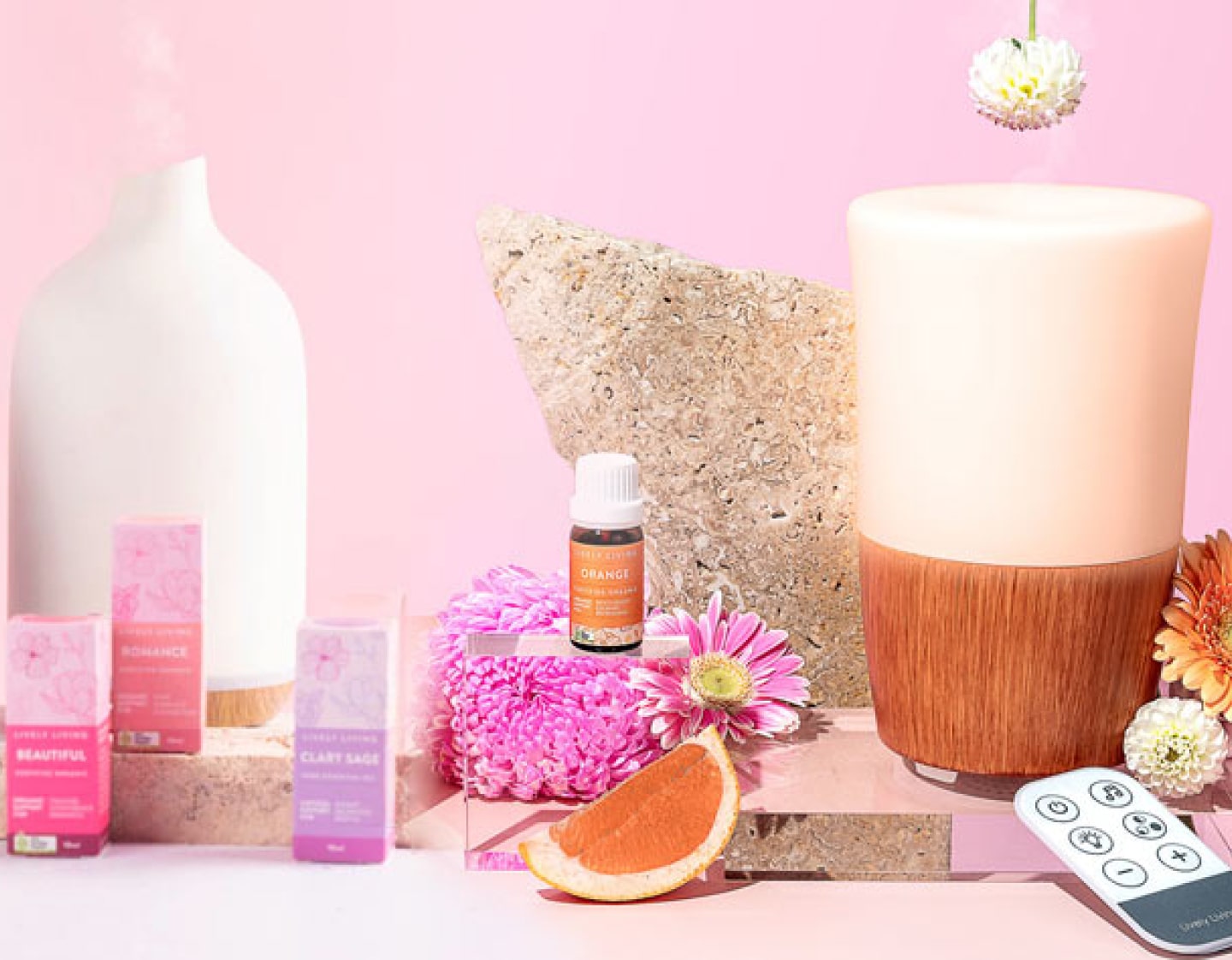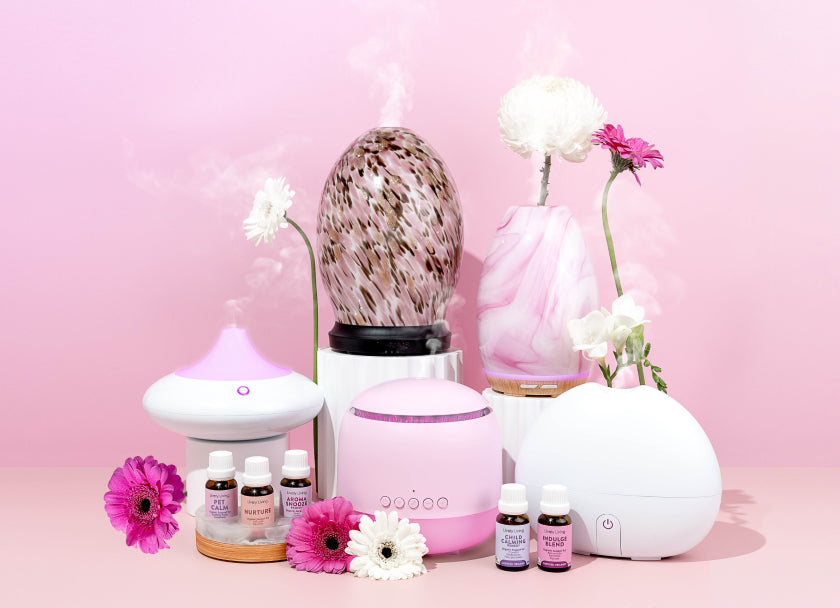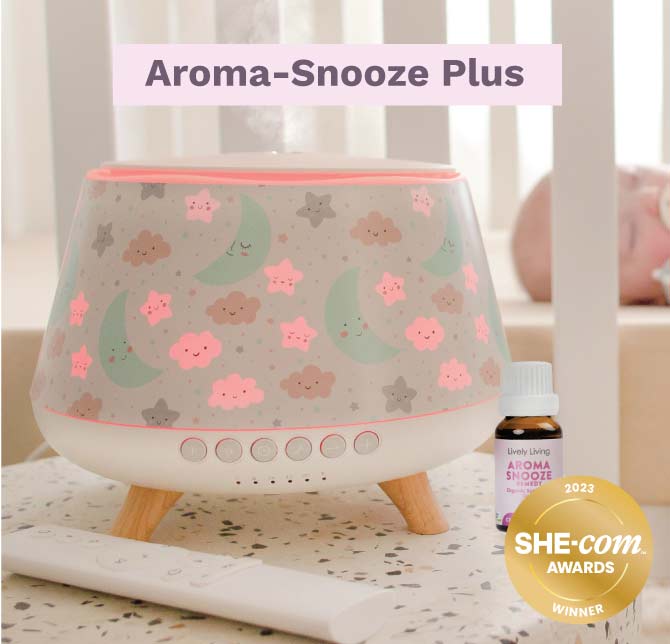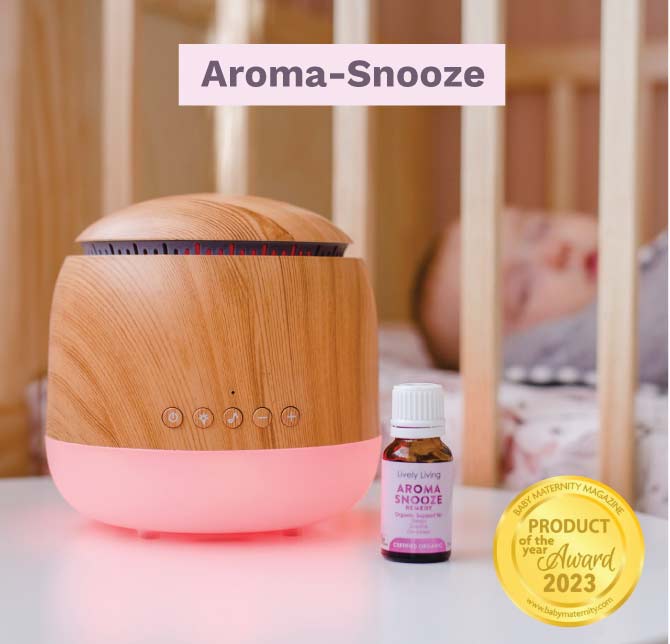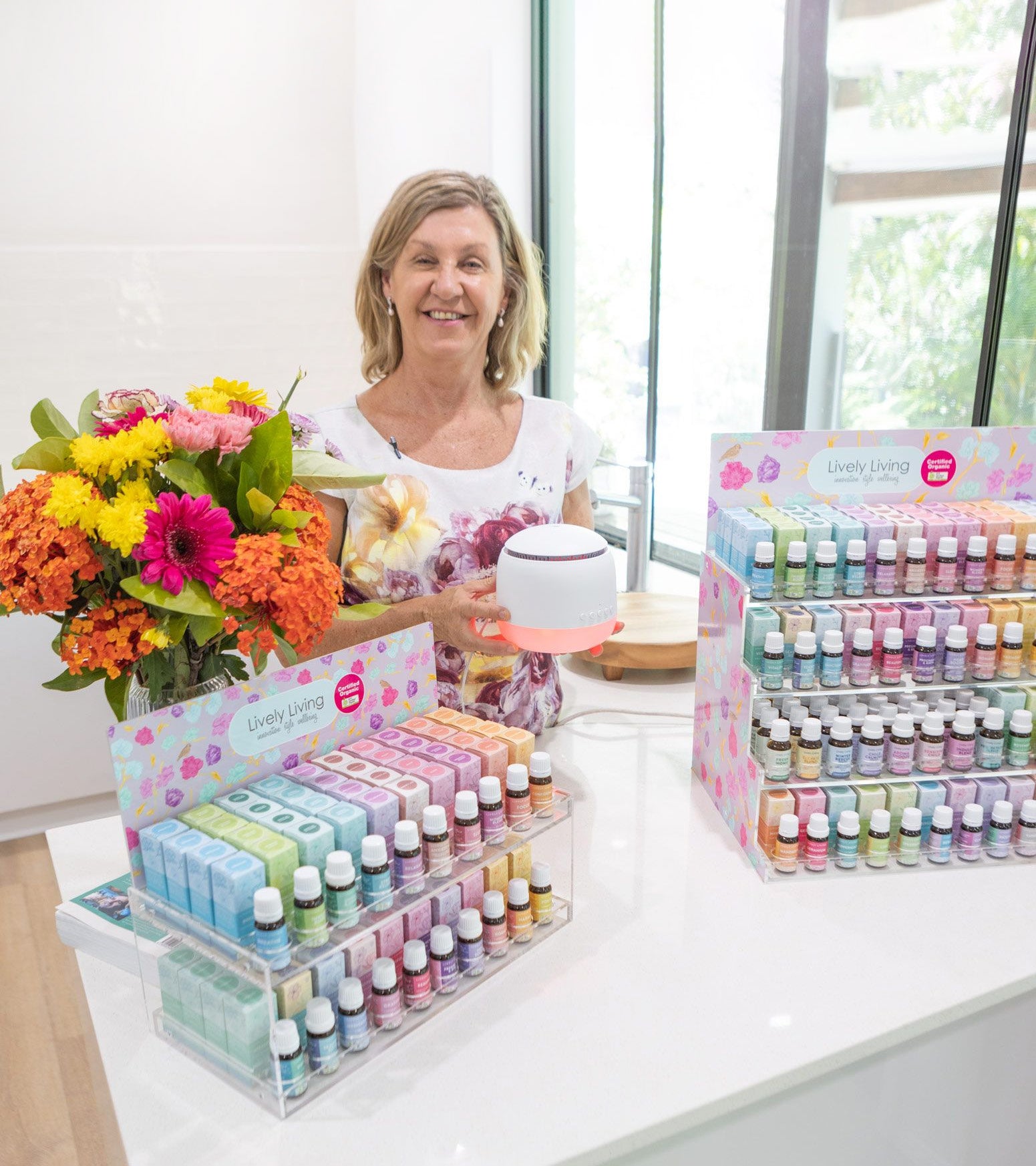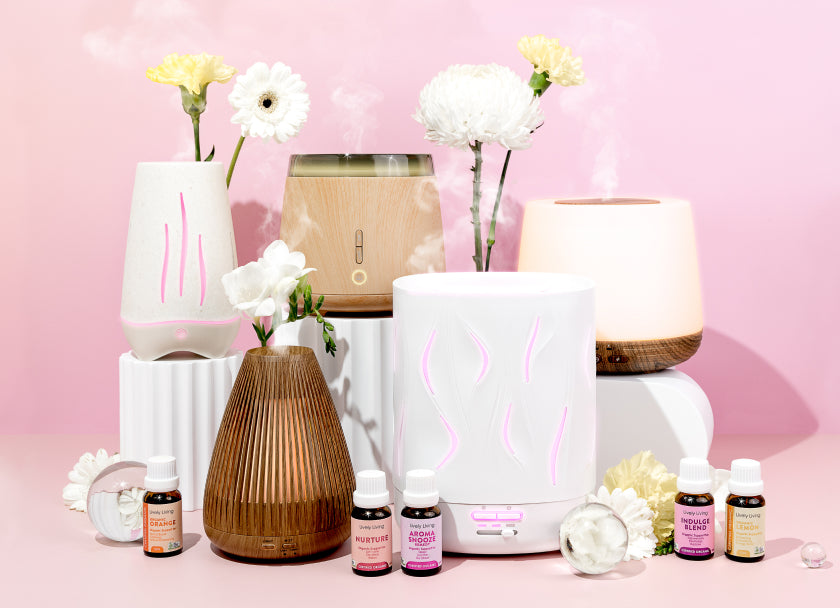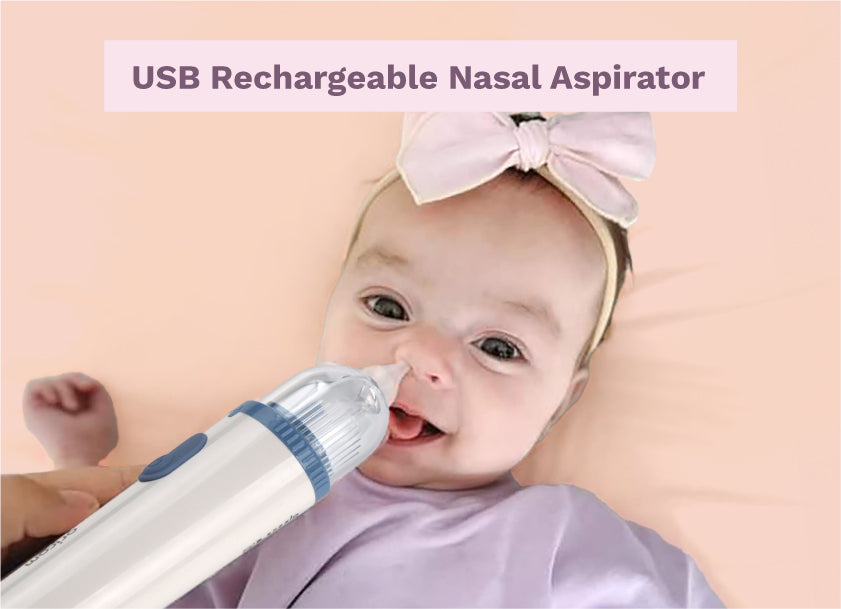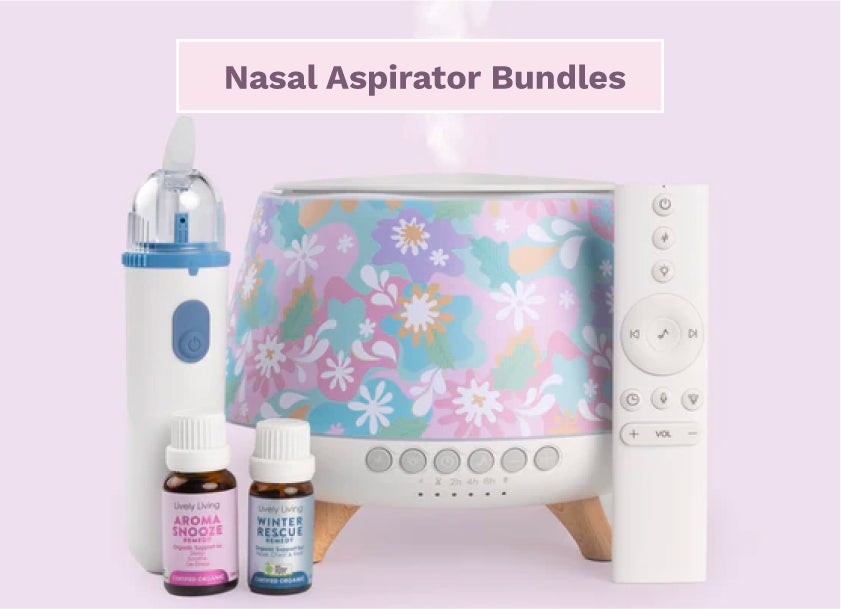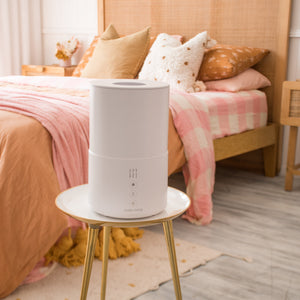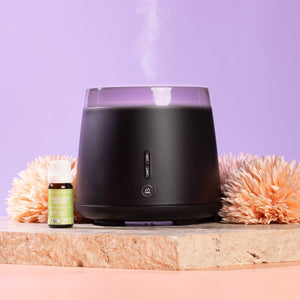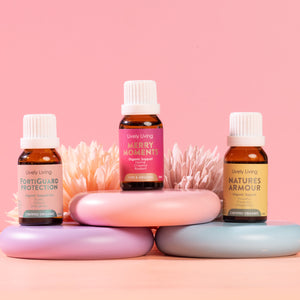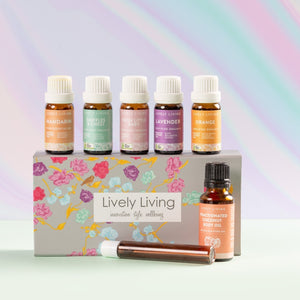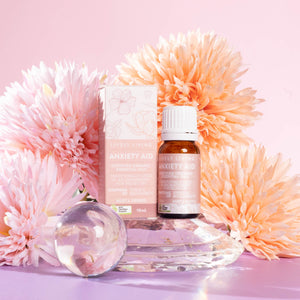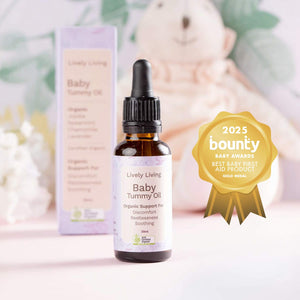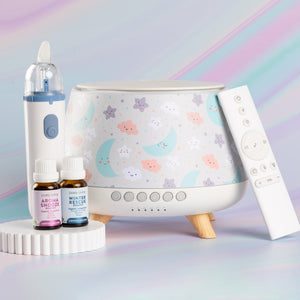Ultimate Essential Oil Diffuser Guide for Beginners
Ever find yourself standing in the aisle, staring at a wall of essential oil diffusers, feeling lost? You're not alone. This essential oil diffuser guide will give you simple tips.
It's easy to get overwhelmed with all the choices available today for diffusing essential oils. This essential oil diffuser guide helps clarify the options, and highlights the significant benefits they offer.
Table Of Contents:
- Understanding Essential Oil Diffusers
-
Choosing the Right Diffuser
- Making the Most of Your Diffuser
- Essential Oil Blends and Safety
- Maintaining Your Diffuser
-
Advanced Diffusion Techniques
- FAQs about essential oil diffuser guide
- Conclusion
Understanding Essential Oil Diffusers
Diffusers disperse essential oils into the air. This method lets you enjoy the aromatic benefits of the oils.
Different diffuser types use different methods to disperse essential oils. Some use water, others use heat, and others use no water at all.
Why Use an Essential Oil Diffuser?
Essential oils offer various benefits. Using a diffuser can enhance your well-being in different scenarios. If you want to improve sleep, stress, congestion, anxiety or to stay more foccused or reduce pain, diffusing your essential oils can help.
A study showed how diffusing essential oils help during labor. Diffusing oils like lavender can create a calming atmosphere. Peppermint oil might help you focus when working or at a conference.
Types of Essential Oil Diffusers
Several diffuser types exist. Each has its own way of working and their own pros and cons.
Ultrasonic Diffusers
These diffusers are generally the most popular. They use electronic frequencies to create vibrations in water.
This breaks down the essential oils into tiny particles. The diffuser then releases the water as a fine mist, coated with the essential oil letting you inhale the benefits. As a bonus, Ultrasonic diffusers add a touch of humidity because they use water.

Nebulizing Waterless Diffusers
Nebulizing diffusers don't require water. They break essential oils into even smaller particles than ultrasonic diffusers.
This creates a more concentrated mist. Consider these for spaces needing a stronger therapeutic impact, or to add aroma to fragrance larger areas.
Heat Diffusers
Heat diffusers use gentle heat to evaporate the oils. While they can be quiet, the heat can subtly change the oil's chemical structure. This is the older style before Ultrasonic Diffusers were invented. Generally they are a ceramic dish and uses a tea light candle to heat the essential oil plate.
Unfortunately, you could lose some benefits of the essential oils. Heat can diminish the therapeutic value of pure essential oils, and a naked flame causes safety concerns.
Fan Diffusers
Fan diffusers use a fan to circulate air across a pad soaked in essential oil. These are simple to use and good for smaller spaces, though not always effective
The downside is that some fan diffusers can be noisy. If you have it nearby at night you may not sleep well, due to the noise.
Other Diffusion Methods
You can get creative with diffusing. Clay pot diffusers are very inexpensive and simple to use.
You can even add essential oil to items around the home. This includes items like cotton balls, or even tissues, to get some benefits. Try adding a few drops of oil to your toilet roll. bin, or pillow
Choosing the Right Diffuser
Think about what features you value. Is ease of cleaning your top priority? Do you value a long run time so you don't have to refill the water tank often?
Factors to Consider
Quality Brand: Livley Living were the first to introduce ultrasonic diffusers into Australia back in 2012. We partner exclusively with the inventors of ultrasonic diffusers whom are the world leading manufacturers, Ultransmit. Whilst many copycat Chinese companies have released many diffusers, the quality is not the same and there are many poor-quality diffusers on the market which are a safety concern. Shopping from Lively Living will provide a quality diffuser and peace of mind.
Room Size: A small diffuser might work perfectly in a bedroom or other small living space. You'll get benefits without overwhelming the space.
A larger living room often needs a more powerful model. Take a closer look at those with a larger capacity to diffuse essential oils properly.
Timer Settings: Look for diffusers with adjustable timers. These are useful features for safety and also managing oil diffusion.
Lighting: Many diffusers offer colored light options. This creates ambiance to further soothe the senses. If diffusing in the evening, a built-in light is helpful and can replace a night light.
Auto Shut-Off: This is a very important safety feature, so review this. This feature will turn the diffuser off when the water runs out. All Lively Living Diffusers have mist auto cut off feature.
Making the Most of Your Diffuser
Picking a good location sets the stage for effective oil diffusion. Then fill it properly with water and oil.
Optimal Placement
Put your diffuser on a stable, flat surface. Placing it in a central area allows the mist to circulate through the room. If placing it in the nursery, on a stool or bedside table close to the cot is ideal, especially if the diffuser has a red light setting as the red light can help baby drift off to sleep.
Keep the diffuser away from direct sunlight and avoid placing it directly in front of vents. Make sure no vents are impacting airflow, which could impact the direction of the mist.
Always place your diffuser on a hard surface, as there is generally a air vent / fan underneath and a soft surface will prevent or block air flow. This will help avoid any water issues that could build up on the base from condensation.
Water and Oil Ratios
Always use clean water in your diffuser, filling it to just below the designated line. Add the recommended number of drops of your chosen essential oil or oil blend.
Less is sometimes more, so start low and adjust to your needs. Be mindful, specific essential oils need to be used carefully with pets around.
For instance, some specific concentrated essential oils may be unsafe if applied to dog or cat's fur directly according to the ASPCA. Be mindful of using Wintergreen essential oil, which, although fantastic, should be done so safely with pets nearby. Although safe for humans, make sure peppermint oil is safe for pets.
Essential Oil Blends and Safety
Diffusing essential oils is generally safe. But, it is vital to use caution when blending oils, and to understand diffuser safety tips.
Creating Blends
Combining oils opens a world of aromatic benefits. For a calming effect, you can blend lavender and chamomile, or other similar oil blends.
Some combinations boost focus, or help relaxation before sleeping. Remember a study showed how adding essential oil can impact a calming bath. You could blend rosemary with lemon essential oil for clarity while bathing.
You could also diffuse sweet almond oil, jojoba oil, coconut oil, or almond oil, which are popular carrier oils. Be aware these have various benefits, with some being more noticeable when added to massage oils.
Safety Precautions
Research any safety considerations for your selected essential oil blend. Be aware of interactions of blending essential oils with certain medications, or health conditions like respiratory issues.
Maintaining Your Diffuser
Keep your clean diffuser in good condition with some routine care and maintenance.
Cleaning Tips
Empty and rinse the water tank after each use. Use a soft, damp cloth to wipe down the interior to prevent buildup from prior oil usage.
A deeper clean can use a mixture of water and white vinegar, to remove oil residue. Run a 50/50 dilution on a cycle once a month.
If you find that the inside of your diffuser has discolored over time, this is generally from the essential oil residue staining the diffuser. A simple deep clean is: when the diffuser is DRY, add a couple of drops of a lemon or orange essential oil to a DRY cloth and wipe it out when DRY. This will remove the oil stain and leave it looking new.
Always follow your diffuser model manufacturer's instructions for best results, and only use pure essential oil in a diffuser, as cheaper synthetic fragrance oils are generally mixed with a carrier oil and will clog and potentially break the diffuser.

Troubleshooting Common Issues
If your diffuser has weak mist output, check that the water level is adequate. Buildup might also block the ultrasonic plate in some ultrasonic diffusers.
| Problem | Possible Cause | Solution |
|---|---|---|
| Weak Mist | Low water level | Add clean water to the fill line |
| No Mist | Diffuser not powered on / defective unit. Overfilled? | Check power cord; clean with vinegar and water left over night |
| Odd smell after several uses | Oil residue buildup | Do a tank clean with warm water, oil wipe or white vinegar |
If there's still issues, contact the retailer or manufacturer of the diffuser. Make sure to try different trouble shooting first before taking that step though.
Advanced Diffusion Techniques
There are numerous strategies and ways you can further improve the diffusion process. Each diffuser type may require some special approaches.
Customizing Diffusion for Specific Needs
When feeling a cold approaching, you might try a blend with antiviral properties. You can also focus on clearing sinuses by diffusing essential oils.
Many essential oils have properties that could aid these purposes. Try looking into Tea Tree essential oil and adding that to an oil blend.
FAQs about essential oil diffuser guide
What is the 30/50/20 rule for essential oils?
There is not a widely recognized '30/50/20' rule specific to essential oil usage. Perhaps it comes from blending ratios when crafting essential oil blends. It may also refer to time limits when using a diffuser, but that is not a standard rule either.
How do I choose essential oils for my diffuser?
Start with the result you are going for when blending essential oils. You should factor in safe blending and consider the intended purpose. Always test blends first by smelling prior to using for any extended period of time.
What oils should you not diffuse?
Oils with potential skin irritants should not be used, especially fragrance oils. Fragrant oils may smell nice, but have no health benefits and are adding more chemicals to your home and ca You want to make sure you are considering diffuser safety.
How do I use essential oils in my diffuser?
It varies by diffuser types, read instructions and manuals provided with diffuser purchase. If you do not have these, check for details online from retailers or the manufacturer. It often will depend on the model, with various settings existing.
Conclusion
Ultimately using an essential oil diffuser gives you options and a wide range of approaches. Different diffusers will lead to various end benefits for you.
You can have multiple diffuser devices depending on each room and your living space. There is not a one size fit's all device. Using this essential oil diffuser guide, choose what helps support the room, room size, or general needs for use.
Lively Living are Australias leading supplier of ultrasonic diffusers and premium organic essential oils. Please contact us if you have any questions.
Julie and the Lively Living Team

